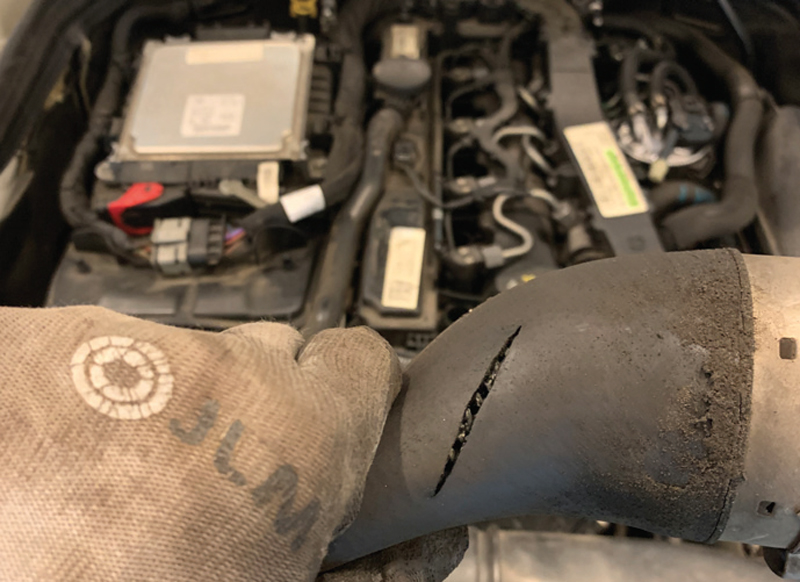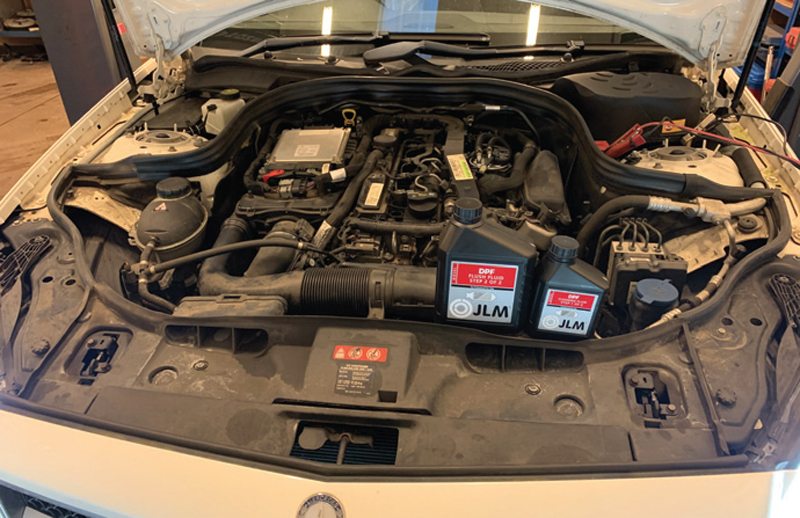
In this month’s DPF Doctor’s Surgery, Barry Lawson of Ewan Lawson Motors explains how a thorough inspection recently saved his time and the client’s money.
Vehicle information: 2013 Mercedes Benz CLS250 – 102,000 miles
Recently a 2013 Mercedes Benz CLS250 with 102,000 miles on the clock was brought to our workshop with the customer reporting that the engine management light was on, and that the car had no power. Despite having been carbon cleaned at another garage before coming to us, the problem remained.
We started by talking to our customer to understand how they use and maintain their car, when these faults had occurred and how long the light had been on.
This is something that Darren (Darren Darling, founder of the DPF Doctor Network) instilled in us at the initial training and every event since! You don’t know what gems of information the customer will yield. So, I let them talk and listen intently.
The customer asked why I was taking him through this process given the previous technician performing the carbon clean had said the DPF was blocked. I explained that we work to our own findings rather than basing our actions on those of another technician. You should not clean the DPF without first knowing whether the system components are operating correctly.

So, on to the assessment confirming the fault. We started up. The Engine Management light remained on with a short road test confirming the car was flat – no power or boost. Scanning the car, we could see various fault codes, most relating to low voltage or power supply. Not of concern at this point although always worth logging and telling the customer.
The two fault codes to concentrate on were: P2463 – the DPF soot content was not ok – it had a component fault; and P2279 – a leakage was identified in the inlet air system. The signal comparison was faulty.
Looking through the live data next and logging it while driving the car, we could see that the commanded boost was much higher than the actual boost – a big red flag. During the assessment we were gathering the data from the ECU but also undertaking manual checks including the engine, looking for obvious faults.
The fault causing the low boost and contributing to poor combustion resulting in too much soot? A split intercooler hose, which had been checked prior to coming to us. It demonstrates the importance of carrying out a pre-clean assessment because this would have caused the DPF to block again within a few hundred miles.

We also found a faulty pressure sensor on the assessment. So, two faults that had not been diagnosed. We could now send the report and repair costs to the customer. Repairs authorised, the work was completed. We carried out the DPF Doctor 3-stage clean using the JLM Lubricants’ professional toolkit and JLM DPF products so the DPF did not have to be removed from the vehicle, saving time (and on modern vehicles this can be a lot) and money. The car now had a DPF within specification.
As professionals, we must keep up with industry developments and continue to learn. This fault was simple, but it had been missed or perhaps the technician hadn’t checked it and simply proceeded with cleaning the inlet system. Even though the fault description mentioned an air leak, it’s not acceptable to shortcut the diagnostic process. Customers must trust in our ability to perform an accurate first-time fix.









